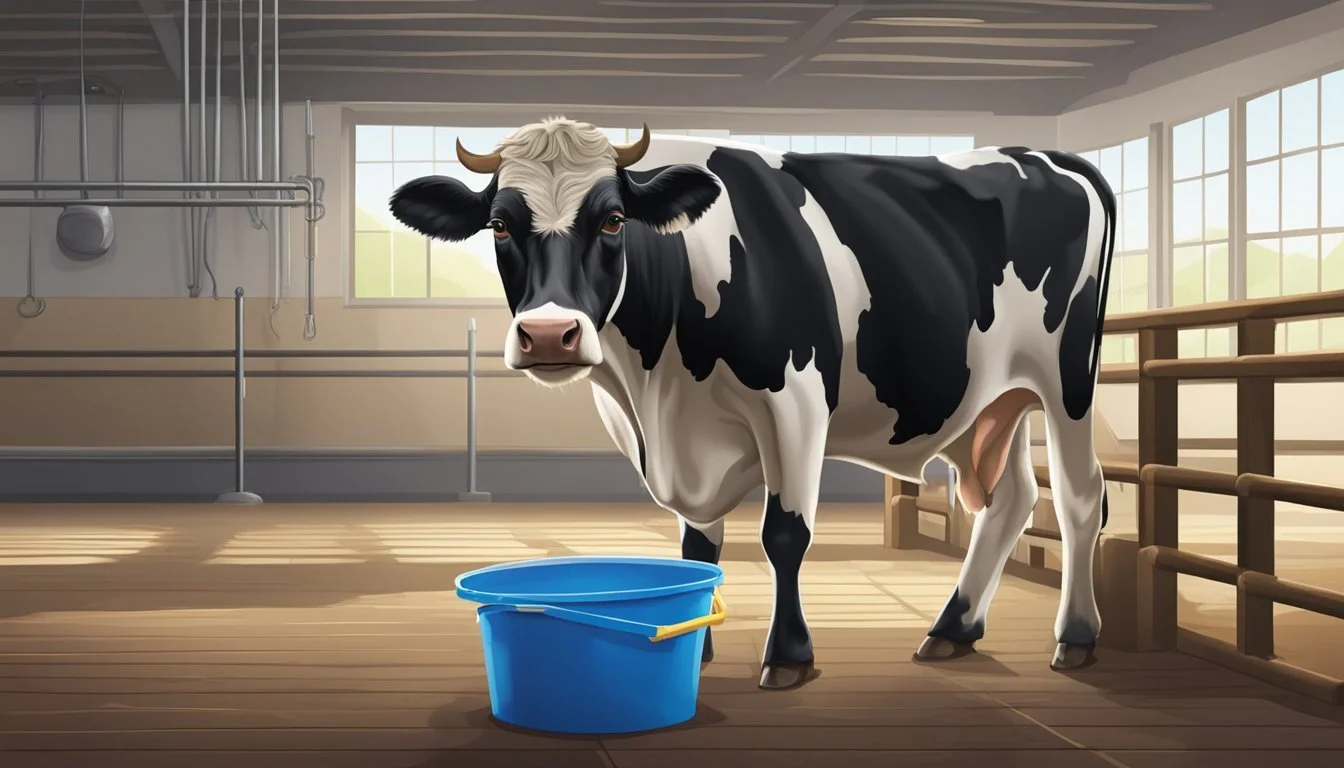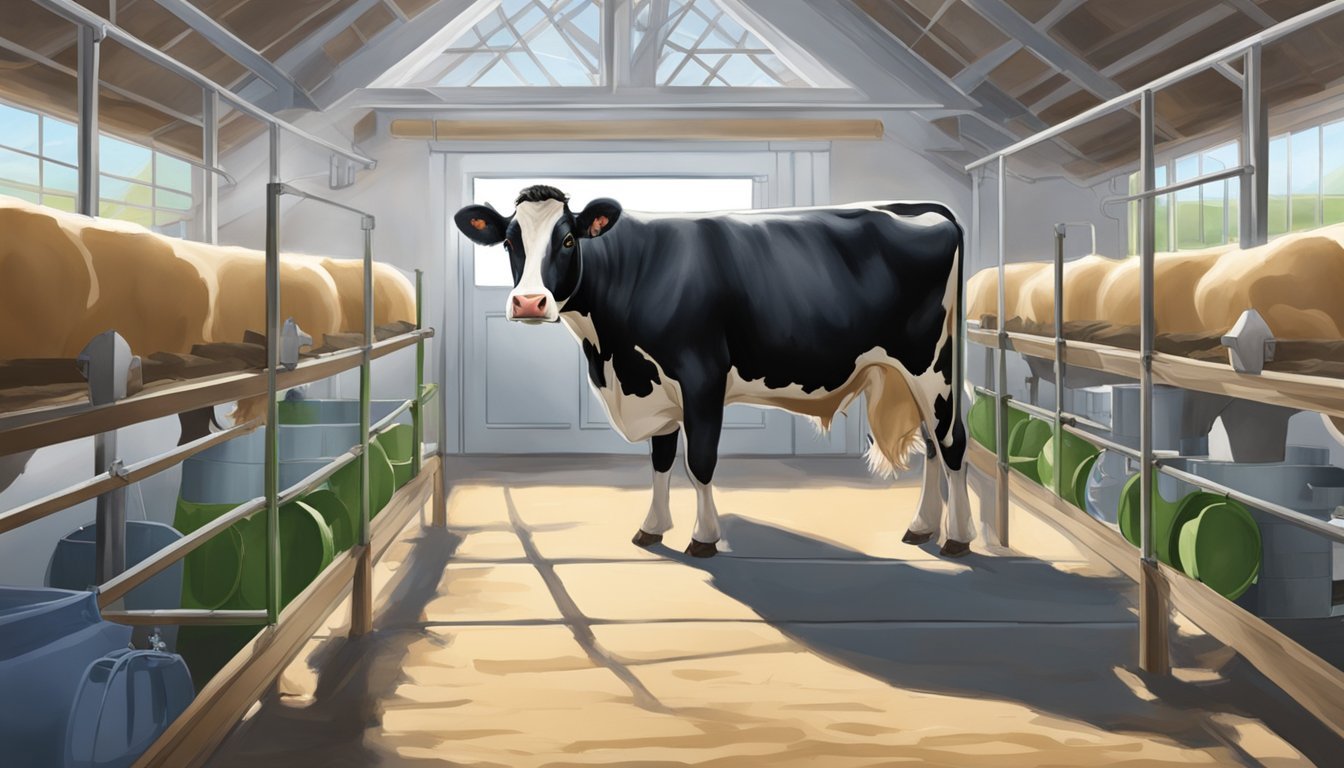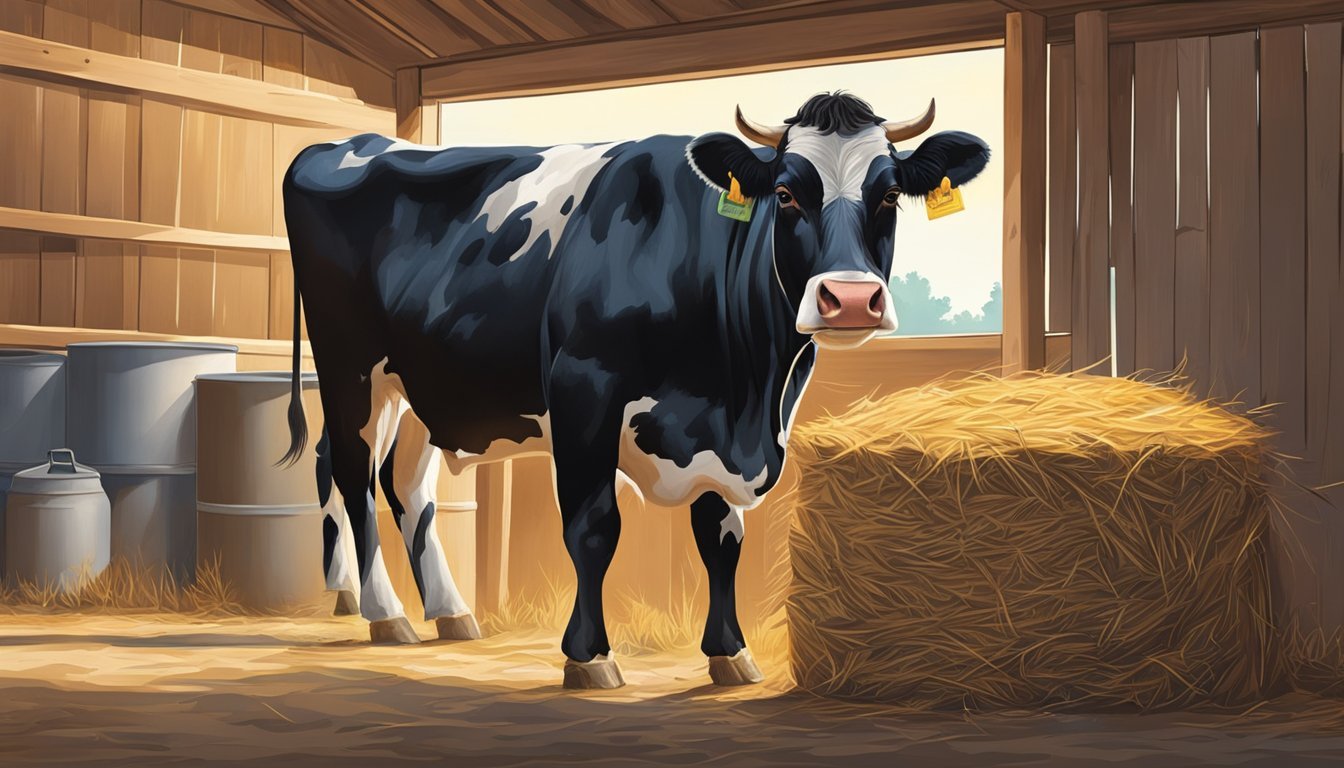Preparing Your Dexter Cow for Milking
Essential Tips for Efficient Homestead Dairy Management
Dexter cattle, a hardy and versatile breed, have emerged as a favored choice among homesteaders seeking to establish a sustainable dairy source. When preparing to milk a Dexter cow, best practices ensure both the health of the cow and the quality of milk produced. The compact size of Dexter cattle makes them ideal for small-scale farms, requiring less space and feed compared to larger dairy breeds. Nonetheless, proper preparation and routine are critical components for a successful milking process.
Before milking a Dexter cow, it is crucial to establish a calm and consistent routine, as cows are creatures of habit and respond well to familiarity. Cleanliness is paramount; the cow's udder should be thoroughly cleaned to prevent contamination of the milk. Additionally, understanding the cow's health and nutritional needs supports optimal milk production and quality. High-quality feed, good pasture management, and adequate hydration are foundational to maintaining a healthy dairy cow on a homestead.
Homesteaders must also consider the logistics of the milking process itself. The timing of milking should align with the cow's lactation cycle and the homesteader's schedule to ensure regularity. Milking equipment should be sanitized and appropriate, and the environment should be tranquil to keep the cow at ease during milking. This approach not only improves the experience for the cow but also maximizes the efficiency and effectiveness of the milking process for the homesteader.
Understanding the Dexter Breed
The Dexter breed is known for its compact size, hardiness, and dual-purpose qualities, providing both milk and meat. This section will touch on the Dexter cow's history, size, temperament, and the characteristics of its milk.
History and Origins
Dexter cattle originated from Ireland, with genetic ties to the Scottish Highland cattle. They were first introduced to America in the early 20th century and have since been a choice breed for small-scale farms.
Physical Characteristics and Size
Dexters are the smallest European cattle breed, making them versatile for various homestead sizes. An adult Dexter bull usually stands between 38 to 44 inches at the shoulder and weighs approximately 1,000 pounds, while cows are slightly smaller.
Height: 38-44 inches (bulls), 36-42 inches (cows)
Weight: 1,000 pounds (bulls), 600-800 pounds (cows)
Temperament and Behavior
Dexter cattle are appreciated for their temperament. They are generally calm and easy to handle, which makes them suitable for smaller farms and inexperienced farmers. Their behavior is cooperative, and they show good mothering capabilities.
Dexter Milk Qualities
The Dexter milk is noted for its high butterfat content, which can range from 3.5% to 4%. This quality makes it excellent for dairy-related homestead activities such as cheese and butter making. As a dual-purpose breed, the Dexter provides both a viable beef option and substantial dairy output.
Setting Up Your Milking Environment
Creating a proper milking environment is essential for the well-being of your Dexter cows and the efficiency of your milking routine. A well-structured space ensures a smooth process for both the cow and the milker.
Choosing the Right Location
The location for milking should be quiet, well-lit, and free from distractions to keep the cow calm during the process. Consider factors such as ease of access, cleanliness, and proximity to the barn or pasture. A stable, non-slip floor is necessary to prevent accidents, and adequate shelter from weather conditions is essential for both the cow's comfort and the milker's convenience.
Equipment Needed for Milking
The essential equipment includes:
Milking Stanchion: To safely secure the cow.
Milk Pail: Preferably stainless steel for collecting milk.
Udder Cleaning Supplies: Such as a teat dip, clean cloths, and sanitizing solutions.
Strainer: To remove any debris from the milk immediately after milking.
Storage Containers: For proper milk transportation and storage.
Ensure that all equipment is clean and easily accessible before beginning the milking process.
Preparing the Milking Stanchion
A milking stanchion is crucial for securing the cow and should be sized appropriately for Dexter cows, which are typically smaller than other dairy breeds. The stanchion must include a head gate and a feeding trough to encourage the cow to enter and stay calm. Prior to milking, inspect the stanchion for safety, ensuring there are no loose parts or sharp edges. Preparing the cow for milking involves cleaning the udder and teats to prevent contamination, followed by a quick health check to ensure there are no signs of infection or distress.
The Importance of Proper Nutrition
Proper nutrition is crucial for a Dexter cow's health, milk production, and overall well-being. Optimizing the dietary regimen ensures the cow is receiving the necessary nutrients to support lactation and maintain a healthy condition.
Feeding Your Dexter Cow
A balanced diet is essential for Dexter cows, especially when they are being milked. This balance includes a mix of forages, grains, and supplements. The feed should provide adequate energy, protein, vitamins, and minerals to meet the cow's needs. Typically, a lactating Dexter cow requires a higher energy diet to support milk production. Utilizing a total mixed ration (TMR) can help maintain consistency in nutrient intake.
Understanding Nutritional Needs
The nutritional requirements of a Dexter cow vary depending on her stage of lactation, age, weight, and overall health. During lactation, the cow's need for nutrients significantly increases. It is necessary to adjust the feed to provide higher levels of calcium and phosphorus, which are pivotal for milk production. A cow's energy needs can be monitored by observing body condition and milk output to avoid both underfeeding and overfeeding.
Hay and Pasture Management
Hay should be of high quality, especially for a milking Dexter cow, as it forms the backbone of winter feeding when pasture is not available. For the rest of the year, pasture plays a vital role in the cow's diet. Implementing rotational grazing can improve pasture utilization and health, providing fresh, nutrient-rich grass while allowing other pastures to rest and regrow.
Rotational grazing systems should be designed to match the herd size and pasture availability, helping to optimize forage intake and maintain pasture condition throughout the grazing season.
Developing a Milking Routine
A consistent milking routine maximizes milk yield and ensures the health and comfort of Dexter cows. Training the cow, understanding the milking process, and deciding the milking frequency are critical for efficiency.
Training Your Cow for Milking
The first step involves getting the cow accustomed to the milking process. Start by:
Gently handling the udder and teats regularly to make the cow comfortable with human contact.
Leading the cow to the milking area consistently at the same time each day to establish a schedule.
Milking Process Steps
Proper technique during the milking process is vital for the health of the cow and the quality of the milk. Follow these steps:
Clean the Udder: Use a sanitizing solution to ensure the udder and teats are clean.
Forestrip: Gently pull on each teat to check for any abnormalities in the milk.
Attach Milking Unit: Once the teats are firm, indicating milk let-down, attach the milking unit.
Once-a-Day vs. Twice-a-Day Milking
Deciding between once-a-day and twice-a-day milking depends on individual circumstances. Consider:
Once-a-Day: Suitable for lower milk-producing cows; reduces labor and may improve cow health.
Twice-a-Day: Increases milk yield; recommended for higher milk-producing cows for optimal efficiency.
Maintaining Cow Health and Wellbeing
Maintaining the health and wellbeing of Dexter cows involves diligent monitoring and care, particularly during critical phases such as udder health management, pregnancy, and lactation as well as preventing infections and diseases. By ensuring these aspects are closely watched and managed, homesteaders can promote the overall productivity and longevity of their cows.
Monitoring Udder Health
Regular inspection of the udder is crucial for early detection of issues such as mastitis. Homesteaders should check for any signs of swelling, heat, or redness, as these can indicate infection. Moreover, it's important to observe the cow's behavior for any indication of discomfort during milking.
Signs to watch for include:
Unusual lumps or swelling
Changes in milk appearance or consistency
The cow showing signs of pain or distress
Pregnancy and Lactation Care
A cow's body condition significantly impacts her pregnancy and lactation performance. Homesteaders should maintain an appropriate diet that supplies all the necessary nutrients, especially during these stages, to support health and milk production.
Key components include:
A balanced diet with adequate energy, protein, and minerals
Sufficient clean water access
Regular veterinary check-ups to monitor the pregnancy progress
Preventing Infections and Diseases
Preventing infections and diseases is as vital as treating them. Stress reduction is key, as stress can compromise the immune system. Homesteaders must ensure clean living conditions and proper sanitation, especially in the milking area, to minimize the risk of disease.
Preventative measures include:
Regular vaccinations as recommended by a veterinarian
Parasite control programs
Isolating sick animals to prevent the spread of disease
Milking Techniques and Best Practices
When milking Dexter cows, adhering to established procedures ensures optimal milk production and maintains the health of the cow. Precise techniques and thorough sanitation are critical to obtaining high-quality milk.
Hand Milking vs. Machine Milking
Hand Milking:
Preparation: Before milking, wash hands thoroughly with soap and warm water.
Procedure: Gently but firmly pull down on each teat, rhythmically squeezing milk into a milk pail designed to minimize splashing and prevent contaminants.
Advantages: Allows for close inspection of the cow's health and udder condition.
Disadvantages: It is more labor-intensive and time-consuming.
Machine Milking:
Preparation: Sanitize the milking equipment and ensure all parts are working properly.
Procedure: Machines mimic hand milking with a pulsating vacuum action, drawing milk into a sealed container.
Advantages: Increases efficiency and reduces labor.
Disadvantages: Initial costs are higher, and proper maintenance is crucial to prevent mechanical failure and contamination.
Handling and Storing Milk Safely
Storage: Immediately after milking, milk should be cooled to 4°C (39.2°F) to limit bacterial growth.
Containers: Use only clean, food-grade containers that have been sterilized.
Filters: Pass the milk through fine-mesh filters or cheesecloth to remove any impurities.
Refrigeration: Store milk in a refrigerator or ice-filled cooler as soon as possible after collection.
Cleaning and Sanitization
Equipment: All milking equipment, including funnels, jugs, and milk pails, must be cleaned with hot water and suitable detergents.
Udder Hygiene: Clean the cow’s udder with a mild soap solution and dry it to remove any dirt, manure, or bacteria before milking.
Post-milking: Sanitize the cow's teats post-milking to prevent infection.
Routine: Establish a consistent cleaning routine to maintain cleanliness and reduce the risk of contaminating raw milk with bacteria.
Beyond Milking: Utilizing Dexter Milk
Dexter milk is not just for drinking; it's a versatile ingredient that can be transformed into a variety of wholesome dairy products at home. With a naturally higher butterfat content, Dexter milk is particularly well-suited for creating rich cheeses and butter.
Producing Dairy Products at Home
Homesteaders can capitalize on the creamy quality of Dexter milk by producing a range of dairy products. From fresh cream to yoghurt, the milk's higher butterfat lends a desirable texture and flavor that enhances homemade products.
Cream: Separated from the milk using a cream separator, it's ideal for desserts and coffee.
Yoghurt: Cultured at home with a starter, yielding a thick and tasty probiotic food.
Making Cheese and Butter
The cheese making process highlights Dexter milk's potential, as its butterfat richness contributes to a superior cheese texture and taste. Soft cheeses (What wine goes well with soft cheeses?) like mozzarella are simple for beginners, while more aged varieties can be explored by experienced cheesemakers.
Butter: Homesteaders often churn Dexter milk to make butter with a pronounced depth of flavor due to its butterfat content.
Basic steps for cheese making:
Culturing: Adding bacterial cultures to Dexter milk to begin fermentation.
Curding: Coagulating the milk with rennet to form curds.
Pressing: Draining the whey and pressing curds into molds for desired cheese shape.
Health Benefits of Raw vs. Homogenized Milk
Consumers seek raw Dexter milk for its unaltered nutrients and enzymes, which are believed to aid digestion and promote health. It is consumed straight from the cow, whereas homogenized milk has been processed to break down fat molecules for consistent texture and shelf life.
Dexter Milk: Rich in butterfat and potentially beneficial enzymes when raw.
Raw milk advocates suggest that pasteurization can diminish nutritional value, emphasizing the importance of safety and hygiene during milking to ensure the health benefits of fresh, unprocessed Dexter milk.
Considerations for Raising Dexter Cattle
When homesteaders decide to raise Dexter cattle for milking, they must consider the breed's specific needs for successful breeding, dairy management, and financial planning.
Breeding and Calf Rearing
Dexter cattle are a versatile breed well-suited to homesteading due to their smaller size and good maternal instincts. When breeding Dexters, attention must be given to ensuring the pedigree of the cattle to maintain breed standards.
Heifer Calf: Adequate nutrition is crucial for a heifer calf to develop into a healthy breeding cow. Milk replacer may be used if natural milk is insufficient.
Bull Calf: Bull calves require proper management, including decisions about castration for meat production or selection for breeding based on pedigree.
Managing a Small-Scale Dairy Operation
The management of a Dexter-based dairy operation demands a clear understanding of the cattle's dietary needs to maintain optimal milk production.
Feed: Dexters thrive on pasture-based diets, with potential supplementation of grain to enhance milk yield.
Milking Schedule: Regular milking schedules are vital for consistent production, with cleanliness and proper handling affecting milk quality.
Financial Planning and Costs
Homesteaders must thoroughly account for the costs associated with raising Dexter cattle to ensure the financial viability of their operation.
Startup Expenses: These may include the initial purchase of cattle, infrastructure for housing, milking equipment, and fencing.
Ongoing Costs: Regular expenses such as feed, veterinary care, and labor must be budgeted in addition to potential costs for pedigree registration.
Homesteading with Dexter cattle can be a rewarding hobby and a potential source of income, but requires careful consideration of the unique aspects of the breed and the associated financial commitments.







